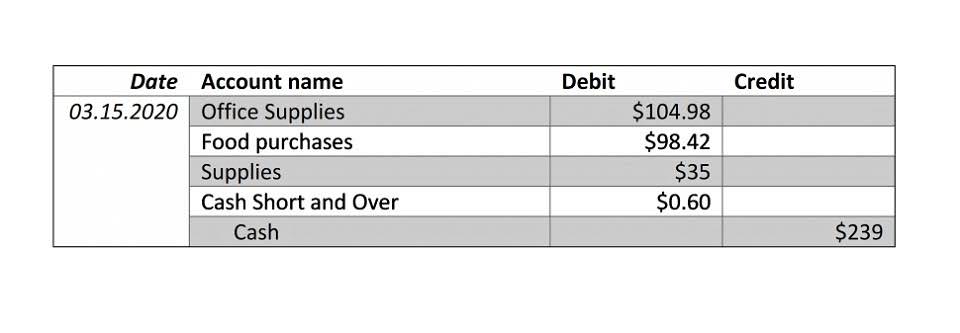Retained Earnings in Accounting and What They Can Tell You

Instead, the retained earnings are redirected, often as a reinvestment within the organization. These funds may also be referred to as retained profit, accumulated earnings, or accumulated retained earnings. Often, these retained funds are used to make a payment on any debt obligations or are reinvested into the company to promote growth and development. The statement of retained earnings is also known as a statement of owner's equity, an equity statement, or a statement of shareholders' equity.
Retained Earnings Formula: Definition, Formula, and Example
Retained earnings are calculated through taking the beginning-period retained earnings, adding to the net income (or loss), and subtracting dividend payouts. The figure is calculated retained earnings represents at the end of each accounting period (monthly/quarterly/annually). As the formula suggests, retained earnings are dependent on the corresponding figure of the previous term.
Are Retained Earnings an Asset or Equity?
- Since revenue is the income earned by a company, it is the income generated before the cost of goods sold (COGS), operating expenses, capital costs, and taxes are deducted.
- This is because they’re recorded under the shareholders equity section, which connects both statements.
- At the end of the period, you can calculate your final Retained Earnings balance for the balance sheet by taking the beginning period, adding any net income or net loss, and subtracting any dividends.
- Retained earnings are the net earnings after dividends that are available for reinvestment back into the company or to pay down debt.
- As an investor, one would like to know much more—such as the returns that the retained earnings have generated and if they were better than any alternative investments.
Therefore, public companies need to strike a balancing act with their profits and dividends. A combination of dividends and reinvestment could be used to satisfy investors and keep them excited about the direction of the company without sacrificing company goals. Yes, retained earnings carry over to the next year if they have not been used up by the company from paying down debt or investing back in the company. Beginning retained earnings are then included on the balance sheet for the following year.
Resources for Your Growing Business
Retained earnings are important for the assessment of the financial health of a company. That net income lets the company distribute money to shareholders or use it to invest in its own growth. Retained earnings serve as a link between the balance sheet and the income statement. This is because they’re recorded under the shareholders equity section, which connects both statements.
Where cash dividends are paid out in cash on a per-share basis, stock dividends are dividends given in the form of additional shares as fractions per existing shares. Both cash dividends and stock dividends result in a decrease in retained https://www.bookstime.com/ earnings. The effect of cash and stock dividends on the retained earnings has been explained in the sections below. Net Profit or Net Loss in the retained earnings formula is the net profit or loss of the current accounting period.
AMD Reports First Quarter 2024 Financial Results
Retained earnings could be used for funding an expansion or paying dividends to shareholders at a later date. Retained earnings are related to net (as opposed to gross) income because they are the net income amount saved by a company over time. Revenue, sometimes referred to as gross sales, affects retained earnings since any increases in revenue through sales and investments boost profits or net income. As a result of higher net income, more money is allocated to retained earnings after any money spent on debt reduction, business investment, or dividends. As stated earlier, there is no change in the shareholder’s when stock dividends are paid out. However, you need to transfer the amount from the retained earnings part of the balance sheet to the paid-in capital.
- If the retained earnings balance is gradually accumulating in size, this demonstrates a track record of profitability (and a more optimistic outlook).
- Retained earnings are calculated by subtracting dividends from the sum total of retained earnings balance at the beginning of an accounting period and the net profit or (-) net loss of the accounting period.
- Your accounting software will handle this calculation for you when it generates your company’s balance sheet, statement of retained earnings and other financial statements.
- That said, investing can also lead to profitable returns that you can use to grow your business further.
- Generally speaking, a company with a negative retained earnings balance would signal weakness because it indicates that the company has experienced losses in one or more previous years.
- When lenders and investors evaluate a business, they often look beyond monthly net profit figures and focus on retained earnings.

Learn financial statement modeling, DCF, M&A, LBO, Comps and Excel shortcuts. There are numerous factors to consider to accurately interpret a company’s historical retained earnings. Over 1.8 million professionals use CFI to learn accounting, financial analysis, modeling and more.
Where Is Retained Earnings on a Balance Sheet?
One of the most important things to consider when analysing retained earnings is the change in the share of equity amount. If you have a decrease in retained earnings, it may show that your business’s revenue and activities are on the decline. It’s often the most important number, as it describes how a company performs financially. They can boost their production capacity, launch new products, and get new equipment.
